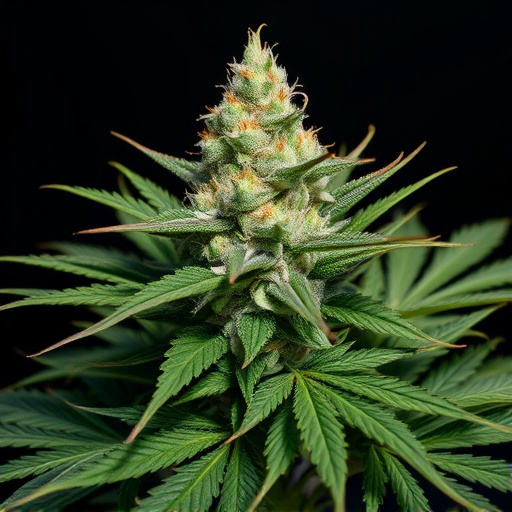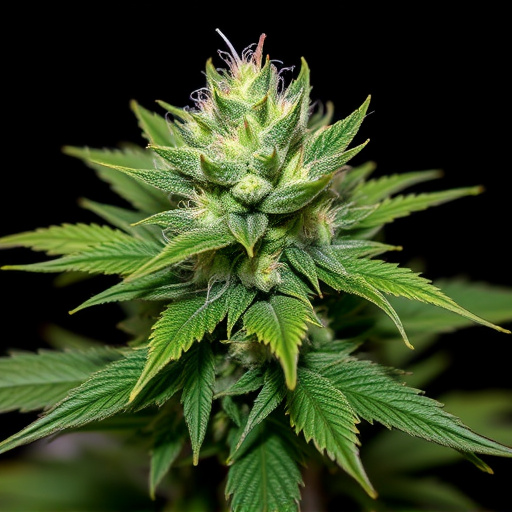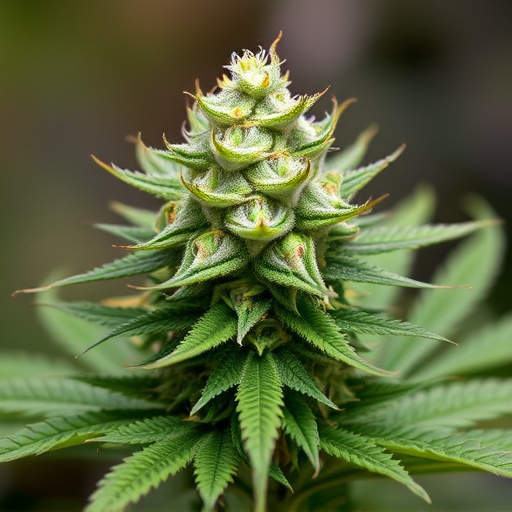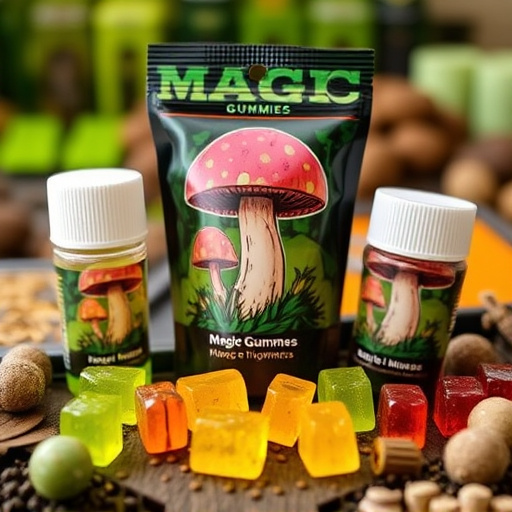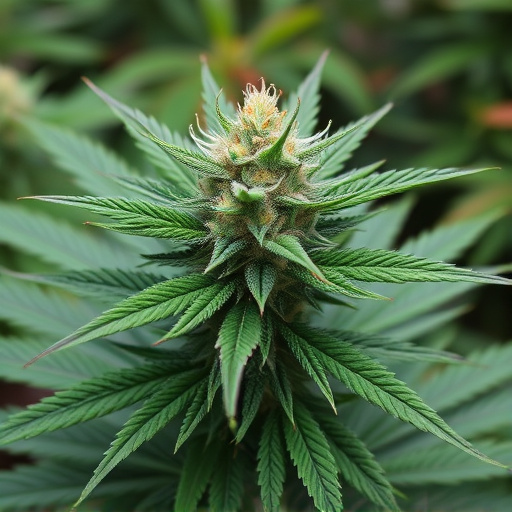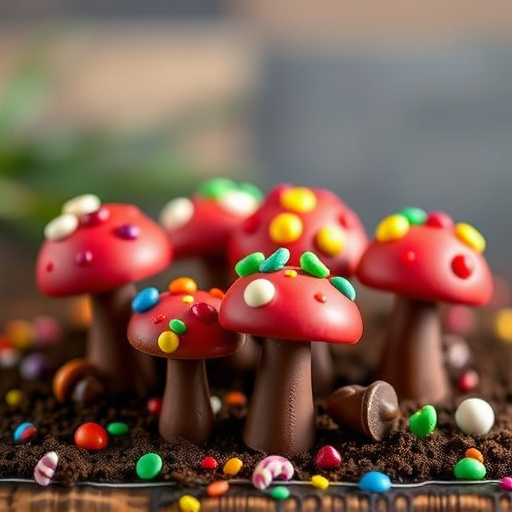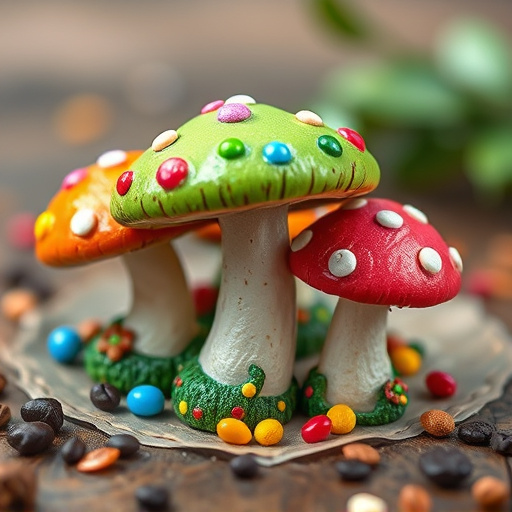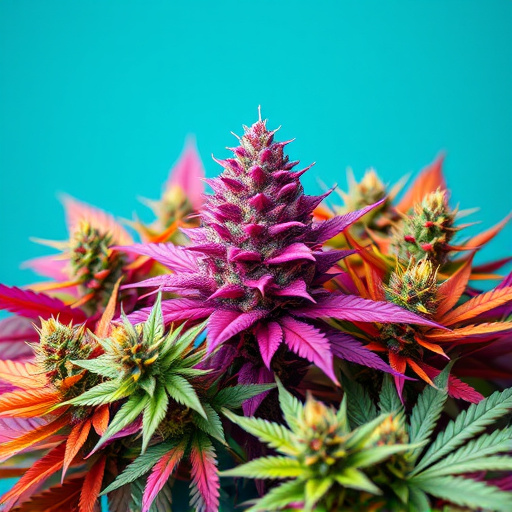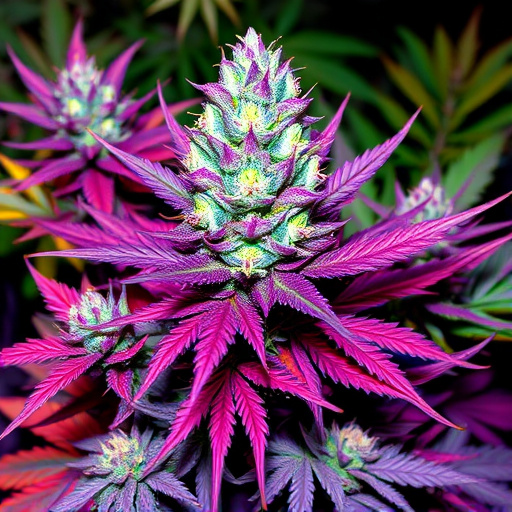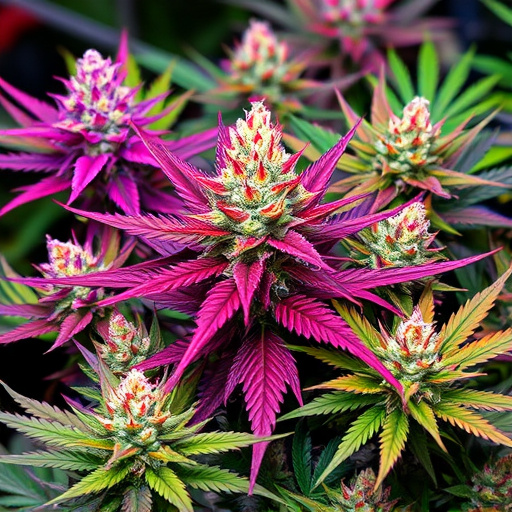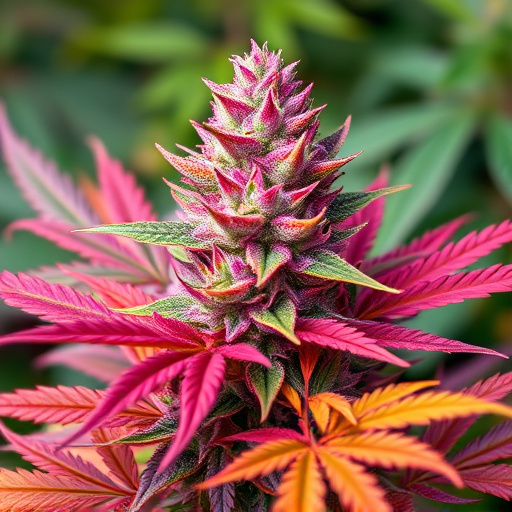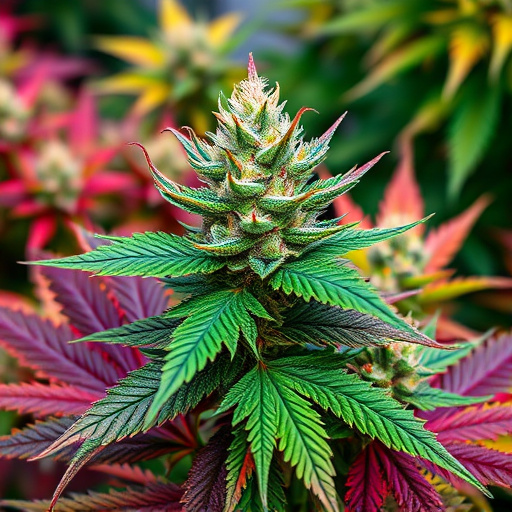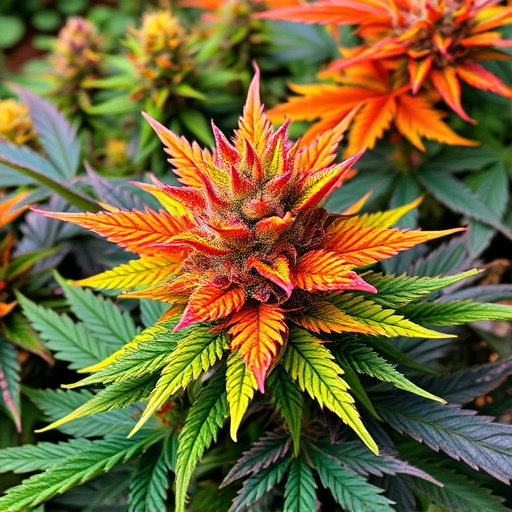Researchers and enthusiasts are interested in the link between color and cannabis potency. While common belief associates vibrant colors with strength, actual potency is measured by cannabinoid levels like THC and CBD. Colorful strains, such as Blue Dream and Gelato, known for their potent effects, offer unique attributes and experiences. However, laboratory testing is essential to accurately gauge potency, avoiding reliance solely on visual cues. Exploring colorful cannabis strains provides insights into potential potency variations and the connection between appearance and plant properties.
“Uncover the intriguing connection between color and cannabis potency in this comprehensive guide. From the scientific perspective, we explore how pigment variations impact the expression of cannabinoids. We delve into the human visual experience, distinguishing between what the eye perceives and the actual chemical composition. Additionally, we present a vibrant journey through popular colorful strains, shedding light on their unique characteristics and effects. Discover why certain hues are associated with specific terpenes and gain insights into the art of cultivating visually stunning and potent cannabis varieties.”
- The Science Behind Color and Cannabis Potency
- Perceptual vs. Actual Potency: The Role of the Human Eye
- Exploring Popular Colorful Strains and Their Characteristics
The Science Behind Color and Cannabis Potency
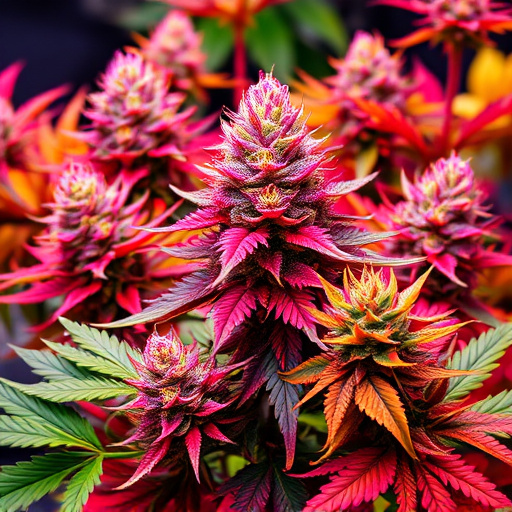
The connection between color and cannabis potency has intrigued researchers and enthusiasts alike, leading to a deeper exploration of the science behind this phenomenon. When we talk about colorful cannabis strains, it’s not just about their visual appeal; the colors can offer valuable insights into the potential effects and potency of the plant.
Cannabis plants produce a wide array of pigments, including chlorophyll (which gives them their green color), carotenoids (responsible for oranges and yellows), and anthocyanins (creating reds and blues). These pigments not only contribute to the strain’s aesthetic but also play a role in protecting the plant from environmental stressors. Studies suggest that the presence and intensity of specific pigments may correlate with the concentration of cannabinoids, such as THC and CBD. For instance, vibrant colors like deep purple or intense red could indicate higher levels of anthocyanins, which some research proposes might be linked to enhanced therapeutic properties, including increased potency.
Perceptual vs. Actual Potency: The Role of the Human Eye
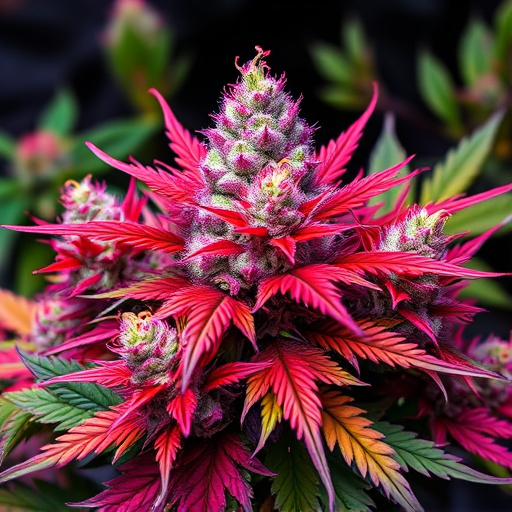
When discussing the potency of cannabis, it’s important to distinguish between perceptual and actual measures. While some may believe that certain colors indicate varying strengths, like a vibrant green signifying higher potency or a deep purple hinting at enhanced effects, these are often misconceptions fueled by marketing and cultural stereotypes surrounding colorful cannabis strains. The human eye can perceive color variations, but it doesn’t directly correlate to the plant’s chemical composition or therapeutic properties.
The actual potency of cannabis is determined by its cannabinoid profiles, particularly concentrations of THC (tetrahydrocannabinol) and CBD (cannabidiol), among other minor cannabinoids. These compounds are responsible for the plant’s effects on the body and mind. Therefore, understanding a strain’s true potency requires laboratory testing to measure these cannabinoid levels rather than relying solely on visual assessments.
Exploring Popular Colorful Strains and Their Characteristics
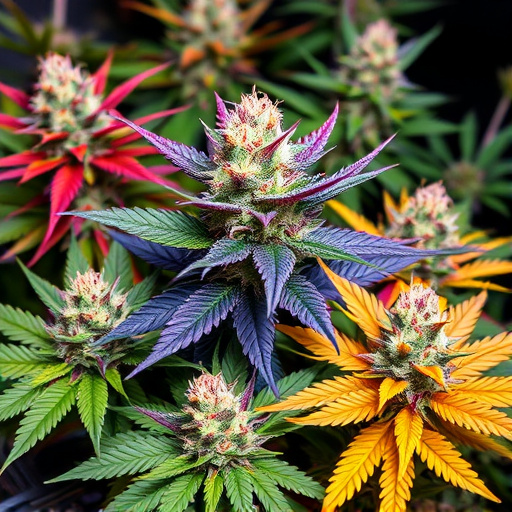
In the world of cannabis, colorful strains have captured the attention of many enthusiasts and researchers alike. These vibrant flowers aren’t just visually appealing; they often boast unique characteristics and potential potency differences. Exploring popular colorful cannabis strains provides a fascinating glimpse into how appearance can hint at the plant’s properties.
For instance, the iconic “Blue Dream” is renowned for its striking blue-purple hues, said to result from a THC-rich hybridization process. Similarly, “Gelato,” with its milky quartz color, is known for delivering potent effects and a distinct flavor profile. These examples highlight that colorful cannabis strains aren’t merely decorative; they may offer distinct experiences, making the exploration of their characteristics essential for both consumers and scientists alike.
While the science behind color and its impact on cannabis potency is intriguing, it’s essential to note that the human eye plays a significant role in perception. The connection between color and perceived potency may not directly translate to the actual chemical composition of the plant. Exploring popular colorful cannabis strains reveals a diverse array of characteristics, offering a unique sensory experience. However, when it comes to potency, other factors like strain genetics, cultivation methods, and terpene profiles contribute more significantly. Thus, while color can be an appealing aspect for consumers, choosing a strain should ultimately be guided by comprehensive knowledge of its actual potency and desired effects.
